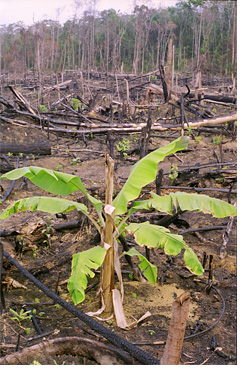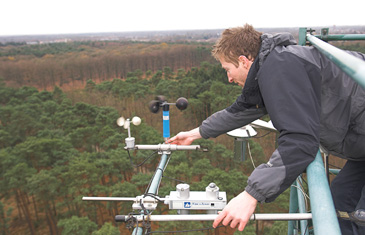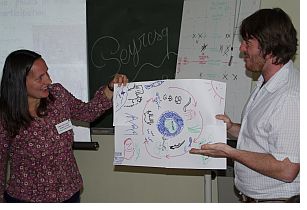News
SPIRAL "UK National Ecosystem Assessment" paper publshed
A new paper has been published based on work carried for SPIRAL, authored by Kerry Waylen and Juliette Young. This paper focuses on the first phase of the UK National Ecosystem Assessment.
Upcoming Event
No upcoming events.
Full description
 The overall aim of WP 2 is to improve understanding of the science-policy dialogue with regards to the role of biodiversity in underpinning livelihoods and ecosystem services. This will be achieved by identifying the factors that constrain or facilitate communication on this issue between scientists and policy-makers, and recommending steps to improve this exchange in Europe and elsewhere.
The overall aim of WP 2 is to improve understanding of the science-policy dialogue with regards to the role of biodiversity in underpinning livelihoods and ecosystem services. This will be achieved by identifying the factors that constrain or facilitate communication on this issue between scientists and policy-makers, and recommending steps to improve this exchange in Europe and elsewhere.
This WP will assess the ways scientific knowledge on the underpinning role of biodiversity in livelihoods and ecosystem services is communicated and negotiated between science and policy. It will particularly focus on the question of if and how such knowledge is directly or indirectly taken up to inform policy, and the factors that facilitate or hamper such processes.
Identify major areas of decision-making where knowledge on the ways in which biodiversity underpins livelihoods and ecosystem services is relevant, but where gaps between scientific knowledge and policy application are perceived as being important.
The first stage will be to identify and provide background information for major areas of decision-making in which knowledge on the relationships between biodiversity, ecosystem services and livelihoods is considered particularly relevant, but where, from the viewpoint of scientists, scientific knowledge appears to be taken up in an unsatisfactory way. Equally we will look at cases where policy-makers feel that scientists have not delivered the necessary knowledge. We will also consider that although the amount of knowledge on the role of biodiversity with regard to livelihoods and ecosystem services is substantial, there are many gaps and uncertainties. The following will be considered:
- National and international environment policy. At this scale, policy makers have to take a broad perspective and we will consider the general issue of the degree to which relevant knowledge is being communicated, recognised and taken up.
- National and international non-environment policy e.g. agriculture, fisheries, forestry. At this scale, policy makers may take a broad perspective but their focus will be primarily on production. They are likely, however, to consider sustainable uses of elements of biodiversity relevant for their sector and may consider the conservation of biodiversity, particularly with respect to cross-compliance policy.
- Situations where the consideration of the role of biodiversity in livelihoods and its role in supplying ecosystem services are potentially relevant to local decision-making. This should include contrasting situations such as protected areas where biodiversity underpins local livelihoods, and managed landscapes where the range of ecosystem services are delivered for the benefit of local and/or distantly located stakeholders. In these situations, there are likely to be conflicting pressures on ecosystems (for biodiversity conservation and/or livelihoods and/or one or more ecosystem services). There will be ample opportunities to explore how relevant knowledge is or is not used.
 Data will be collected through a grounded, iterative process of semi-structured interviews (and, where appropriate, small group discussions) with key actors (n=20-30) – both scientists and policy-makers – in the three areas mentioned. Based on these interviews we will identify specific cases and issues where communication was seen to be successful, and those where communication was seen to be insufficient or to have failed. A draft framework will be produced that gives a provisional overview of the factors seen to facilitate or hinder effective communication. We will also investigate if these factors vary between the three areas, and if there are factors that are specific to any of these levels of science-policy cooperation. This overview will be used to inform the interview guideline for the subsequent task.
Data will be collected through a grounded, iterative process of semi-structured interviews (and, where appropriate, small group discussions) with key actors (n=20-30) – both scientists and policy-makers – in the three areas mentioned. Based on these interviews we will identify specific cases and issues where communication was seen to be successful, and those where communication was seen to be insufficient or to have failed. A draft framework will be produced that gives a provisional overview of the factors seen to facilitate or hinder effective communication. We will also investigate if these factors vary between the three areas, and if there are factors that are specific to any of these levels of science-policy cooperation. This overview will be used to inform the interview guideline for the subsequent task.
To assess the factors that constrain communication between scientists, policy-makers on the issue of biodiversity and its role in supporting livelihoods and ecosystem services
This task draws on the findings from the initial set of interviews, and will focus on a selection of cases and issues that allows us to explore the factors that constrain or facilitate communication in more depth. A second series of semi-structured interviews will be carried out with scientists, communicators and policy-makers to understand better the mechanisms by which communication of biodiversity issues between scientists and policy makers currently operate.
The interviews will place particular emphasis on identifying and understanding:
- Perceptions of the current knowledge and uncertainties relating to biodiversity and how it underpins livelihoods and ecosystem services.
- What knowledge influences the decision-making processes of policy makers, and why,
- What existing knowledge does not influence the decision-making processes of policy makers, and why, e.g. because this knowledge is not effectively transferred to them, because it is deemed irrelevant or unreliable by them, or because other factors have a conflicting influence on the decision-making process,
- What major gaps exist in the knowledge required by policy makers to support their decision-making processes.
To recommend steps to improve communication between scientists and policy-makers and to reduce the lack of recognition in policies and in social behaviour of scientific knowledge relating to the role of biodiversity in livelihoods and ecosystem services
 The results of the first two parts of WP 2 will be synthesised to produce recommendations on steps to improve communication between scientists and policy-makers, and increase the recognition in policies of relevant knowledge on the ways in which biodiversity underpins livelihoods and ecosystem services. These draft recommendations, together with relevant information from WP 1, will be discussed in a workshop with stakeholders and decision-makers and final recommendations produced, including generic recommendations relevant to science-policy and science-society interfaces. The recommendations from this workshop will feed directly into the project recommendations of science-policy interfaces.
The results of the first two parts of WP 2 will be synthesised to produce recommendations on steps to improve communication between scientists and policy-makers, and increase the recognition in policies of relevant knowledge on the ways in which biodiversity underpins livelihoods and ecosystem services. These draft recommendations, together with relevant information from WP 1, will be discussed in a workshop with stakeholders and decision-makers and final recommendations produced, including generic recommendations relevant to science-policy and science-society interfaces. The recommendations from this workshop will feed directly into the project recommendations of science-policy interfaces.




